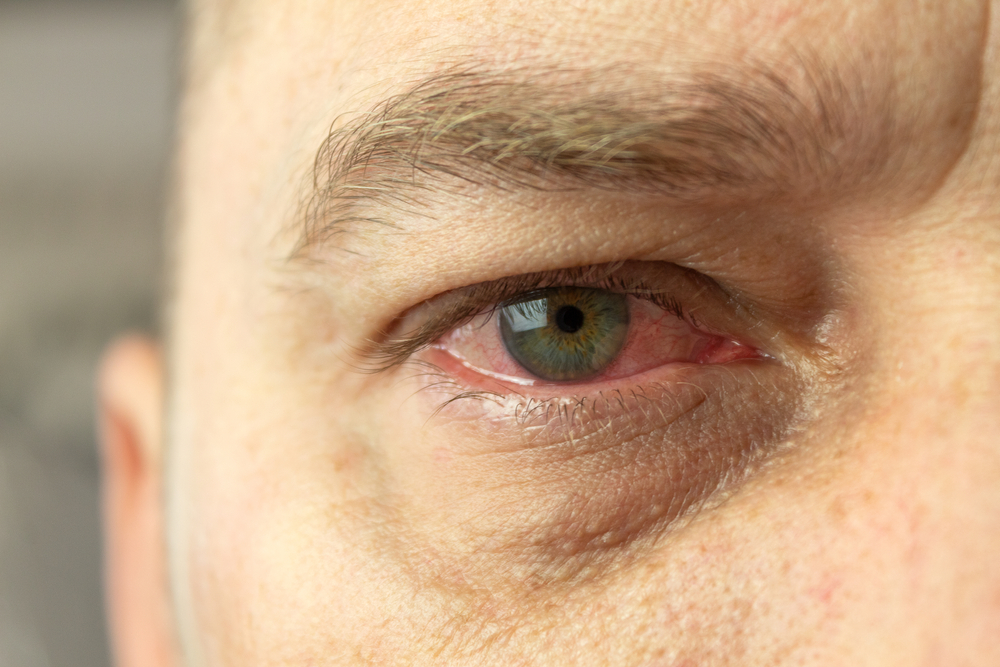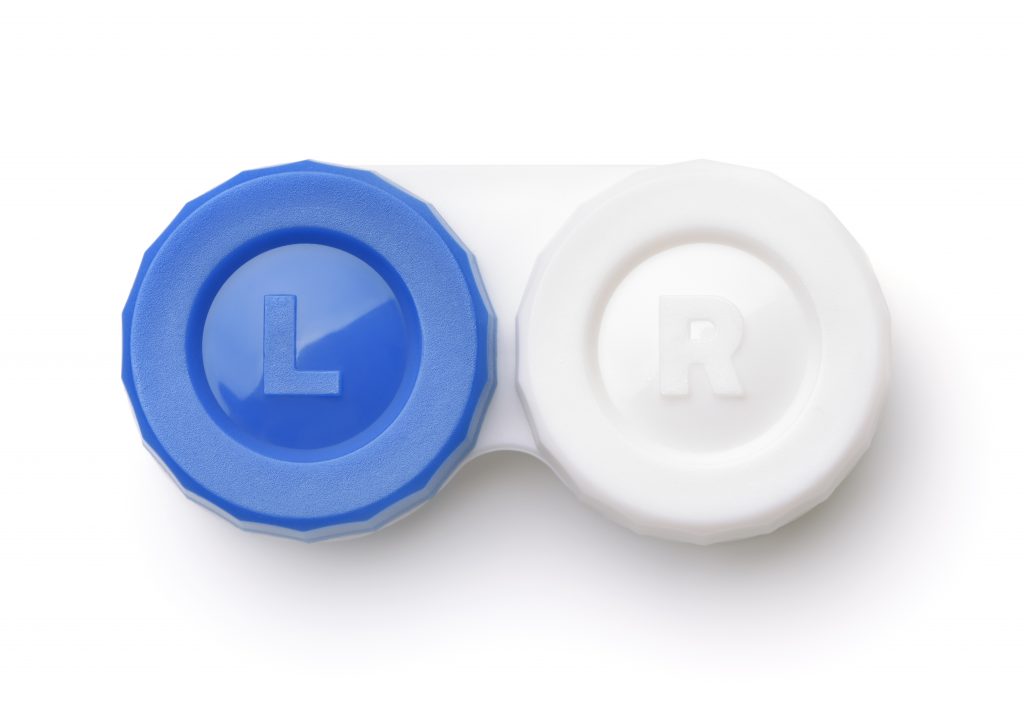
Today, there are more contact lens options than ever. From convenient daily lenses to astigmatism-correcting rigid gas permeable options, contact lenses give millions of people clear, glasses-free vision!
One of the most important ways to protect the health of your eyes if you wear contact lenses is to replace them when recommended. If you are unsure about why and when you should replace your contact lenses, it’s always important to ask your eye doctor.
Keep reading to learn how often you should replace your contact lenses!
What Factors Affect Contact Lens Replacement?
Several important factors can influence how often you should change your contact lenses:
Overall Eye Health
People with certain eye conditions, such as dry eyes or allergies, may need to replace their lenses more frequently to maintain overall eye health. If you start to experience eye irritation, redness, or discomfort, it is advisable to stop wearing your contacts until you have consulted with your eye care provider.
Care and Cleaning

Proper care and cleaning of your contact lenses is critical to preventing infections or other eye problems associated with contact lens use. Poor care and cleaning habits can lead to the buildup of bacteria and deposits on lenses, necessitating more frequent replacement.
Lifestyle and Environment
Individuals who are exposed to dusty or polluted environments might need to change their lenses more often. Similarly, if you frequently engage in activities that cause your lenses to become dirty or uncomfortable, such as swimming or heavy exercise, you might benefit from more frequent replacement.
Manufacturer’s Guidelines
Manufacturer’s guidelines are based on extensive research and testing to ensure the safety and efficacy of your contact lenses. You should always follow the manufacturer’s guidelines for lens replacement.
When You Should Replace Your Contact Lenses
Different types of contact lenses are designed to be replaced at different intervals, ranging from daily to annually. Here are recommended replacement guidelines by contact lens type:
Daily Disposable Contact Lenses
Daily disposable contact lenses are designed to be worn for only a single day. They are ideal for people with busy lifestyles or those who want to avoid dealing with the hassle of cleaning and storing lenses.
Recommended Replacement: Every day. You should use a fresh pair each morning and discard them when you take them out before bed.
Bi-weekly Disposable Contact Lenses
Bi-weekly contact lenses are intended to be worn daily for up to two weeks. Unlike daily contact lenses, bi-weekly lenses require nightly removal, cleaning, and storage in a disinfecting solution.
Recommended Replacement: Every two weeks. You should discard and replace the used pair after fourteen days of continual use.

Monthly Disposable Contact Lenses
Monthly contact lenses are designed for one month of daily wear. Like bi-weekly lenses, they must be removed, cleaned, and stored each night in a disinfecting solution.
Recommended Replacement: Every month. You should replace them after thirty days of consistent use.
Quarterly and Extended-Wear Contact Lenses
Quarterly and extended-wear contact lenses are designed to be replaced less frequently than monthly disposable lenses. These types of lenses are made of unique materials that are more resistant to bacteria and deposits, allowing them to be safely and comfortably worn over more extended periods without daily removal.
Recommended Replacement: Quarterly lenses should be replaced every three months. Replacement of extended-wear lenses can depend on the specific lens you wear and your eye care provider’s recommendations.
Rigid Gas Permeable (RGP) Contact Lenses
Made of a hard plastic that allows oxygen to pass through, RGP lenses can last significantly longer than soft contact lenses. These lenses are usually custom-fitted and can be a good option for people with more severe astigmatism.
Recommended Replacement: Generally, these lenses should be replaced annually or as directed by your eye care provider. With proper cleaning and care, certain RGP lenses can last for years.
What Are the Risks of Not Replacing Your Contact Lenses?
Not replacing your contact lenses as recommended by the manufacturer and your eye care provider can lead to serious eye health conditions, including:

Eye Infections
Worn-out contact lenses can harbor bacteria, fungi, and other pathogens that can cause serious eye infections, such as keratitis, which can lead to vision impairment or loss in severe cases. Symptoms of keratitis include redness, pain, discharge, and changes to the quality of your vision.
Discomfort and Dryness
Over time, contact lenses can accumulate protein deposits from tears and environmental exposure. These deposits can cause discomfort and dryness, making lenses uncomfortable to wear.
Reduced Visual Clarity
A buildup of deposits can affect the clarity of contact lenses. Cloudy contact lenses are less effective at correcting vision and reduce overall visual clarity.
Corneal Damage
Corneal damage is the most serious risk of not replacing your contact lenses. Wearing contact lenses beyond their recommended replacement time can lead to hypoxia (lack of oxygen to the cornea), which causes corneal swelling, irritation, and long-term damage.
What Are the Best Practices for Contact Lens Wearers?
Contact lens wearers can ensure optimal eye health and comfort by following these best practices:
Adhere to Your Contact Lens Replacement Schedule
Always replace your lenses as advised by your eye care professional and the lens manufacturer.

Establish Good Hygiene Habits
Wash your hands with antibacterial soap before handling lenses, use fresh disinfecting solution daily, and never reuse old contact lens solution.
Store Contact Lenses Properly
Use the appropriate case for your contact lenses and replace that case regularly.
Schedule Annual Eye Exams
Schedule annual eye exams to monitor your eye health and ensure that your contact lenses are giving you the best possible vision.
Be Aware of Symptoms
Contact your eye care provider immediately if you experience any discomfort, redness, or changes in vision while wearing your contact lenses.
You can get the most out of your contact lenses by following recommended contact lens replacement schedules and maintaining proper hygiene practices. Both are essential to ensuring the comfort and effectiveness of your contact lenses and for keeping your eyes healthy!
Do you want to learn more about contact lenses? Schedule an appointment at Northeastern Eye Institute in Scranton, Clarks Summit, Dallas, Forty Fort, Hamlin, Honesdale, Hazelton, Peckville, Montrose, Mountaintop, Pocono Summit, Tuckhannock, Wilkes-Barre, PA, at 570-342-3145 today!